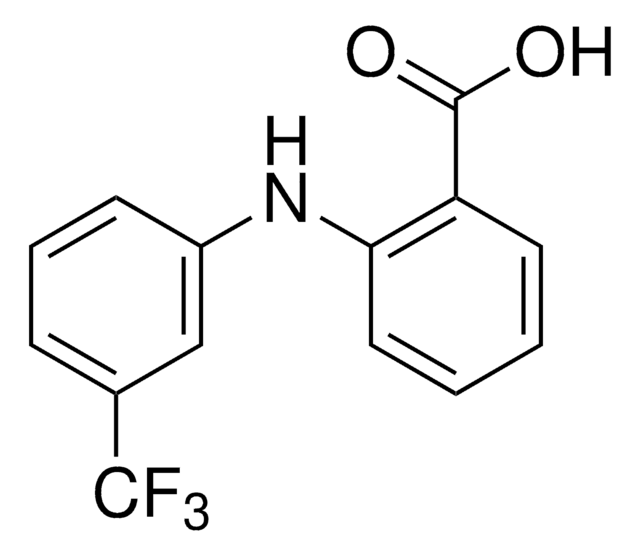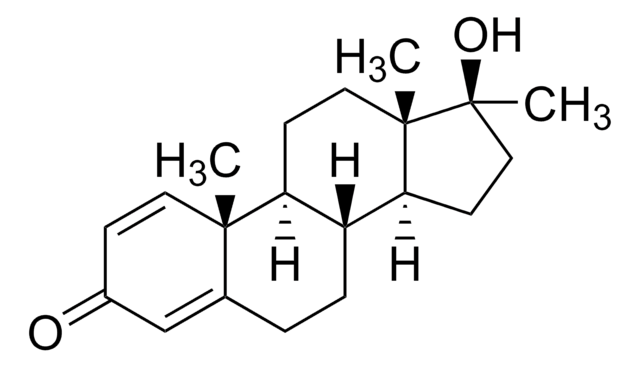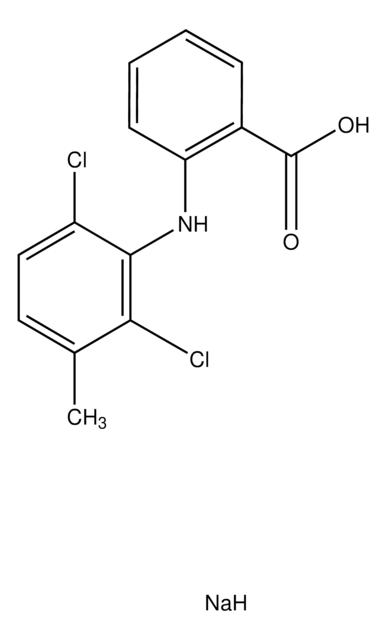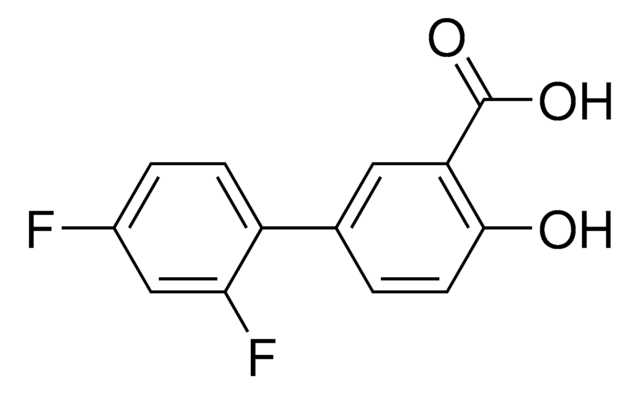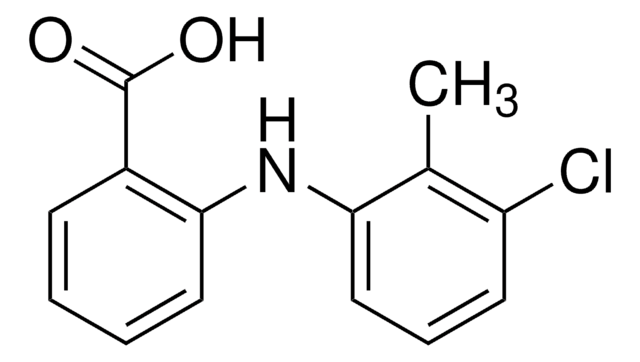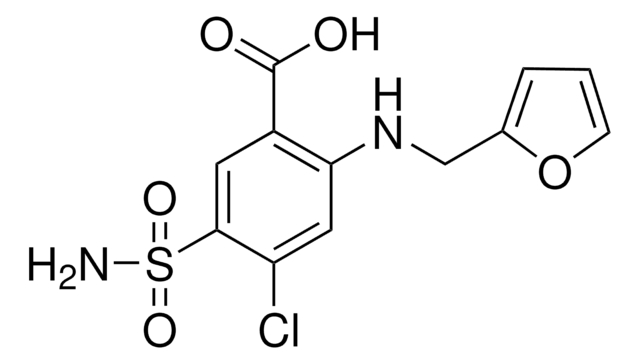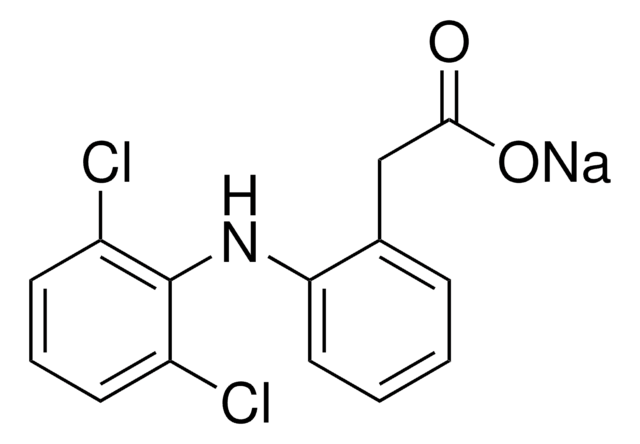M4267
Mefenamic acid
Synonyme(s) :
2-[(2,3-Dimethylphenyl)amino]benzoic acid, N-(2,3-Xylyl)anthranilic acid
About This Item
Produits recommandés
Auteur
Shionogi
Chaîne SMILES
Cc1cccc(Nc2ccccc2C(O)=O)c1C
InChI
1S/C15H15NO2/c1-10-6-5-9-13(11(10)2)16-14-8-4-3-7-12(14)15(17)18/h3-9,16H,1-2H3,(H,17,18)
Clé InChI
HYYBABOKPJLUIN-UHFFFAOYSA-N
Informations sur le gène
human ... PTGS1(5742) , PTGS2(5743)
Vous recherchez des produits similaires ? Visite Guide de comparaison des produits
Application
- to test its hepatotoxic effect in the transgenic zebrafish cell line (LiPan)
- to test its neuroprotective functionality in zebrafish embryos/larvae
- in the preparation of mucoadhesive microparticles in hydrogel beads
Actions biochimiques/physiologiques
Caractéristiques et avantages
Mention d'avertissement
Warning
Mentions de danger
Classification des risques
Acute Tox. 4 Oral
Code de la classe de stockage
11 - Combustible Solids
Classe de danger pour l'eau (WGK)
WGK 3
Point d'éclair (°F)
Not applicable
Point d'éclair (°C)
Not applicable
Équipement de protection individuelle
dust mask type N95 (US), Eyeshields, Gloves
Faites votre choix parmi les versions les plus récentes :
Déjà en possession de ce produit ?
Retrouvez la documentation relative aux produits que vous avez récemment achetés dans la Bibliothèque de documents.
Les clients ont également consulté
Articles
Drug Transport
Notre équipe de scientifiques dispose d'une expérience dans tous les secteurs de la recherche, notamment en sciences de la vie, science des matériaux, synthèse chimique, chromatographie, analyse et dans de nombreux autres domaines..
Contacter notre Service technique